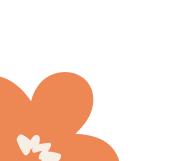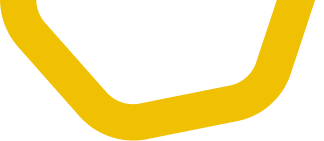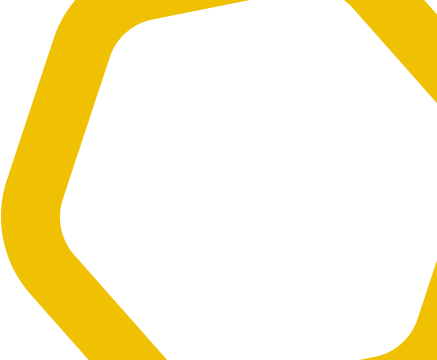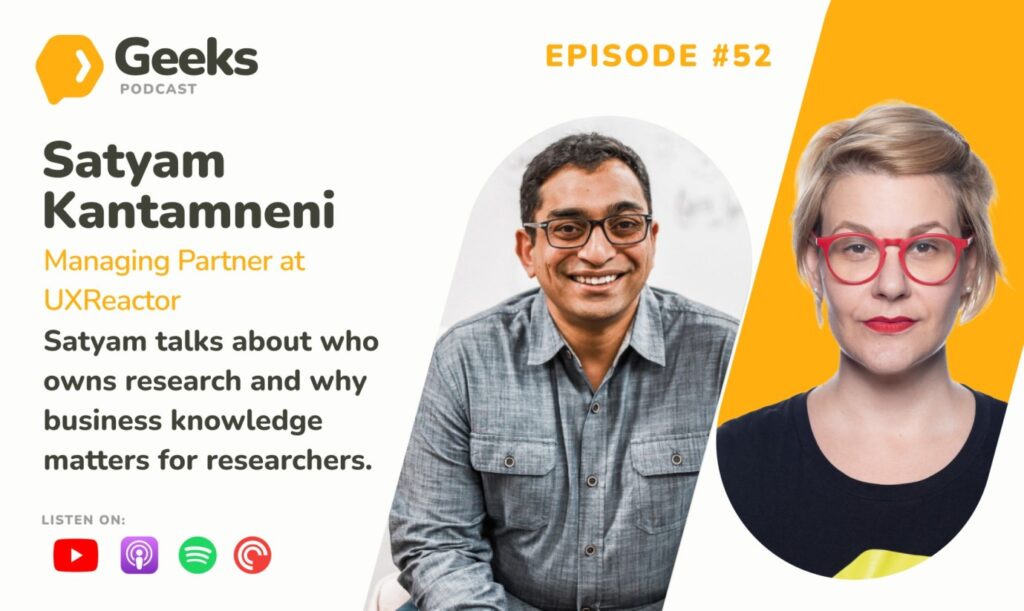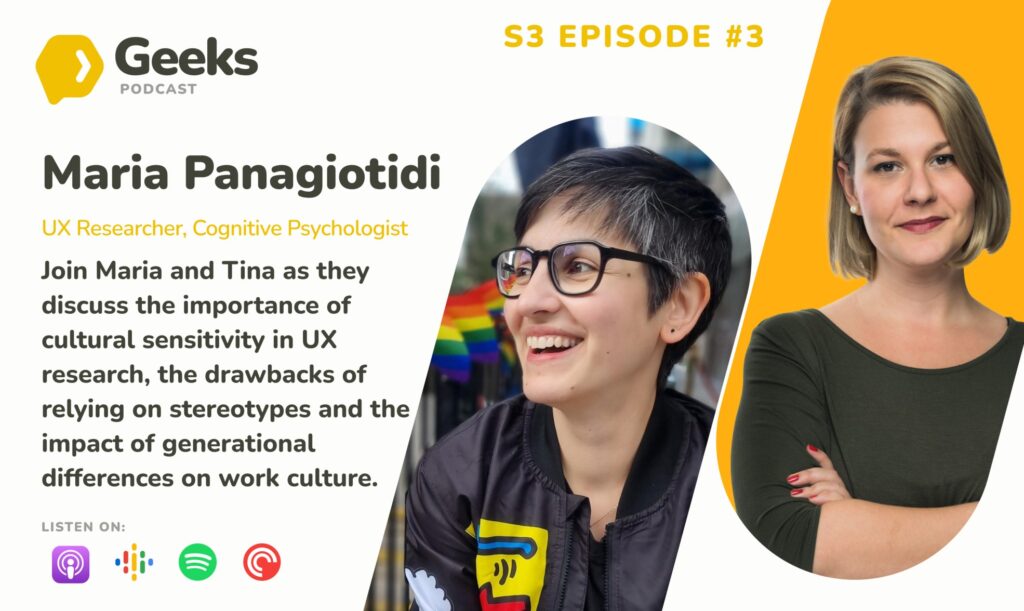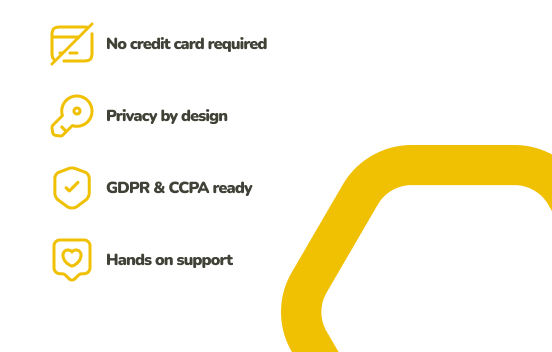Episode highlights
00:01:23 Olivia’s background
00:03:06 Olivia’s role in Finix Payments
00:08:11 Research methods and prioritization
00:18:44 Reflections on UX research
00:21:32 Closing thoughts
About our guest
Olivia is a meticulous product designer with deep experience bringing user empathy and clarity to complex systems—from consumer fintech and enterprise logistics to payment processing workflows.
At the time of this recording, she led the design of no-code payment tools at Finix Payments, helping drive the company’s expansion from software platforms to direct merchants. Olivia now works at Meta, where she leads design for effective business communications in the advertiser experience.
Podcast transcript
[00:00:00] Tina Ličková: Welcome to UXR Geeks, where we geek out with researchers from all around the world and topics they’re passionate about. I’m your host Tina, a researcher and a product manager, and this podcast is brought to you by UXtweak, the UX research platform for recruiting, conducting, analyzing, and sharing insights all in one place.
You are listening to UXR Geeks and this is a conversation I had with Olivia. This conversation is a little bit different because Olivia is a designer of experience from free startups and we were actually talking about how research can be done in startups as well in low maturity research organization, which those startup up where.
And I think Olivia has some practical, also high level thoughts on how to run it, how to actually build on strong collaboration and become a middleman between product sales as a designer and as a researcher. Tune in.
Hi Olivia, let’s start with you. Personally, who are you? What do you do?
[00:01:18] Olivia Ponedel: Of course. So, hi everyone. I’m a product designer right now working at FinTech called Fin Experiments. And for me, career wise, out of school, I have been spending six years as a product designer in three startups of various sizes and domains so far.
And because of my curiosity, I would say I always a person who kind of dive really deep into what do usually actually want if we want to build a thing. So that ended up having all different sort of fun experience during research, a different set of, and teams. So that’s, I think that’s why I’m here to share my experience.
[00:02:01] Tina Ličková: There were not many designers in our podcast. But what I found super interesting about you is that you have a very interesting toolkit and experience coming from three startups, which are also three very different startups. So maybe let’s start there and telling us like what kind of companies you worked for.
[00:02:21] Olivia Ponedel: Of course, the three companies I have worked in, they are all different in the domain and also the team sizes and the various of the. Maturity and then process wise for the team setup. And I started off working in a mobile banking effort, teenager called step. And then later on I moved into Flexport. Um, this is a very late stage startup that I would say close to a, like a bigger organization or enterprise where there are a lot of processes set up.
But I was in a unique position that the team is relatively new to design. So I got the chance to run actually a foundational research because this base have no rich fund at all. The third startup, which is I’m currently at, is finished payments. And it is also on to business side that we build experience for the business users.
But because it’s like the kind of typical two B, we call it enterprise design, that the end user usually is not the one who make purchase decisions. So the research is also very interesting that it’s not always available to the end user. If you want to get. Direct feedback so that I was trying to also various of techniques and one of it’s is actually in like incorporating the sales team in my research process to use them as like, uh, access to what are the prospect or the potential customer is interested and help me to connect the user perspective and then circle back to our product team.
[00:04:00] Tina Ličková: You were mentioning working with sales, and this is something that some researchers do not like to hear, and some researchers are like, okay, wait a minute. Okay. This is interesting because it could be an opening door to research Yes. In an organization. So what is your experience and how did it go through?
How did it look like? I know some researchers or even UX people are very skeptical towards it because a sales call or a sales meeting is usually there to persuade and I’m wondering what could, what
[00:04:38] Olivia Ponedel: have you been able to take out of it? I think your question bring out a good point that I think I will need to get more context of what exactly that process like.
So emotionally, like people might think, oh, is that means I. Befriended my sales team and then I got into some sales call and sitting there. So it’s actually beyond like more than that. And initially, so how the entire process started is, oh, it seems a lot. ’cause what I learned about this approach that doesn’t solve my struggles, which is limited time of my own time.
That I needed to budget out to sit in those conversation. And of course like sales wanted to lead that conversation. So it’s limited of what I can jump in and what kind of things I can talk about. ’cause I don’t want to give. False promises of this is what we can provide, especially something that’s not shipped or not guaranteed to be shipped.
The initial setup is I actually started internal conversation with the sales team, the lead of the sales team, and it’s set up like a weekly cadence of me hosting weekly meetings with everyone on the sales team. So in order to, for the design and product and to understand better. What exactly this group of people needs and wants and help us to prioritize things that really gonna help them and sell.
So that’s why I started this meeting. So I get this conversation going as a way to let the sales team know how they can best help me, and also if they have something they really want and the prospect or their customer have been telling them. You don’t have this, so we are not gonna move forward with you.
If they tell me about that, I could get the chance to like talk, dive in a little bit more, and even show them concept and prototypes so they can understand, oh, help me understand, is that the direction they’re asking for? Or if it’s unclear, can we actually circle back to our customer to ask them a little bit more details of.
When are you exactly using it? What kinda setup you do? Or what is the business type that have a unique workflow and ways to complete the certain tasks so that they can bring those back to me as a way to do a little bit more exploration. And as a exchange, I collect all of the evidence and then present it to our product team so it becomes a valuable asset to, for the product team to prioritize.
Oh, we noticed this is a pattern. So this is some reason that worth process feature. So it ended up some of the get on the kind of a target shipping day, so I can bring that date back to the sales team and tell, oh, this is coming on the line. So if there are customer who talk to you that actually interested in these feature.
Then you can actually tell them, Hey, we actually have this. It’s not live yet, but it’s gonna come out. So it’s not gonna be like oversell. ’cause we do, we are actively working on it already. So it’s that kind of values change.
[00:07:43] Tina Ličková: What I find really effective is that you are actually saying it’s helping you with a prioritization.
As the first thing and the second is that you got the space you needed and you are giving back some value, as you said, value exchange for the sales team to be informed what is coming up. And I think it’s nice that you actually became the middleman between product. Right, and sales. It’s very interesting.
What are the other ways, or you were mentioning you would even say you have a toolkit on research in startup organizations. What are the other ways how you pursue organization like startup so do research and to do it well?
[00:08:28] Olivia Ponedel: Yeah. The most effective way for me is to be able to connect what I wanted to do on the research perspective, to connect to the business.
If the purpose is to help more acquisition, then I really need to make sure my initial design for the launch is the true MVP, which means it needs to really convert people to use this consistently and then stick there and then become like they can convert the sales talk, actually get Envoy, right? So those are the things that.
Help me to put it together like a pitch almost to say, Hey, these are some of the user problems, I assume, because without research we cannot know, but I have a hunch, this is what it is. And I did my competitive analyst by various of the online resources and find some theme that they all have the overlapping ideas or features and stuff.
We are not doing this because not only because all competitors have it, but we wanted to understand how our target customer will actually benefit for this set of the new things we wanna develop. So in order to do that, like these are some of the things I need to know, and then I will propose I need to talk to a customer, or either I need to run usability, prototyping testing.
Or even run surveys or stuff. It just really depends on the, the scope and timeline that we could get from our product team that it will decide what method we can use. But on the high level perspective is more play a smart, what time we have, what can we do, and play it from there to just decide on onsite
[00:10:18] Tina Ličková: Yeah. When you’re saying this, the question that popped up immediately in my mind is like, how do you actually may make decision on what to do research on what to go deeper into, because that’s probably also something that you need to prioritize what is important to good energy to persuade people that we need more knowledge about it.
[00:10:43] Olivia Ponedel: Yeah. On a design perspective, I have my own take of what is the most critical. User flowed to determine whether this thing will be success or not. There is like a list of the must have features and there’s some nice to have, so I already have it map up in my mind. So during the design reviews and some of the process negotiating with product and other stakeholders, there will definitely be some of the question that back and forth conversation about.
Do we really want this to be like, do we want this be a input or dropdowns or models or ways of the ways that if I find out this is some conversation that no one’s can convince anyone, then this is a really good point that, okay, let me bring in the actual user feedback. No one needs to bring in their subjective feedback into this kind of debate.
Let’s just bring in more evidence. So those are the moments that I would most definitely. We will try my best to get any research to be done if there is kind of arguments or like a alignment needed in any point of the project. But otherwise it’s more, for example, if we are redesigning the entire dashboard that we own right now, that this is something fundamentally gonna affect everyone.
So of course those like bigger decision, we want to be more careful and then more bring more like user research forward ahead so that we don’t. Ship something that disrupt like the majority of our customers. So it’s more playing out on actual changes and impact of the scope and also what, how critical it is of the success of the things we’re launching.
[00:12:27] Tina Ličková: We’ll be right back after a short break with a commercial message from our Spencers. Hey UXR Geeks, you know this podcast is brought to you by UXtweak. I’ve tried several UX research tools before, and most item make recruitment a nightmare or overcomplicate The analysis. UXtweak is the first one that actually does both.
Well. I can recruit participants from over 130 countries with solid quality checks and detailed profiling, and it supports both moderated and unmoderated studies and analyzing results doesn’t feel overwhelming. It just makes my research smoother. So if you’re curious, go to uxtweak.com website and start for free, no credit card and no strings attached.
Designers are our best buddies, and I always feel like they’re very keen to have the feedback and to meet the customers. Per se, face-to-face or in a remote or not remote setup. So a typical step is to do interviews. Is there any other ways how you are trying to get the user feedback or that you prefer, and what does it bring you?
[00:13:51] Olivia Ponedel: Yeah, I think user interview give us a lot of evidence. More contextual. Understanding of how, let’s say if user gets stuck, I could potentially use like some of the virtual platforms that I can just put my prototype in. We wanna understand if this thing is just universally intuitive for any human, so that they can just not get blocked by not finding things we.
Just run the quick usability tasks internally, support team or some engineer even that they’re not like under, have a full understanding of what our target audience will be like, but more like usability standpoint and each, when user interviews play an important role for us to business perspective, to validate if this is something that truly what.
We’ll convert them into purchase, for example, on the backlog on our design team, actually, we constantly curate a list of the customer that were willing to talk to us. ’cause we let the sales team and our support team to know, oh, if any customer are free, ’cause we do collect net promoter score or did a quarter service to send it off to our assistant customer.
So occasionally there will be people like, oh, these customer have these problems. They wanted to. Talk to support and they’re willing to also talk to design team. So design team always have backlog of the questions in case at any point someone show up, oh, we wanna talk to you next week. We’ll always prepare that there are some of the top problems that we have in line on the design team.
We want to validate, so we have that. And aside from interviews, I started to push a little bit more and we actually integrated finally this year is, we call it full story, so they’re more like. Quantitative side of the data. So before I actually like talk to sales or actually get into a customers, I just quickly play around with the funnel to say, oh, if we, I want to see how many people click on this button.
I can look at that data. Or if I want to know what is the conversion, where the drop off point is, I could also do that. So those become also very handy if I want to get some quick insider if this is actually important thing. That deserve my time and also the customer’s time. If no one actually help us, then maybe that’s save us some time.
It’s pre-screening, I would say, on, on this process, so that’s also something that I use heavily right now.
[00:16:24] Tina Ličková: In the last couple of months, I was very much into trying to understand the roles of the product trio, product manager, designer, and where research falls into this. A lot of what you’re saying, I would also expect to be happening on the PM side.
That’s why I’m also wondering how does the split of finding out stuff from users and getting feedback from them, divide between you and the PMs in, in the companies that you are working for?
[00:17:01] Olivia Ponedel: I think at FedEx, because the team is so small and we are working so closely together. It does not have a fine line.
And also it really depends on the project perspective because there’s some very technical feature that we are releasing this API for those developer teams, and a lot of things that we need a way to also show visual cues on the dashboard so that when the developer in implemented this, they can come back to see, oh, I can check the status of this, and something like that.
So those technical decision oftentimes. Our product team have a better understanding on how the engineers are actually using this, and they are more. In a lead kind of position for those kind of feature and for a more newer side of, for example, the one I’m working on, like we call the no code for the user who are smaller business who do not own a developers who cannot afford that.
They are the person who primarily just use the website dashboard tool to complete all of the transaction or initiate all everything they need. So those are more users that. Perspective that the design are owning more of, what are the languages we should use and what are the flows and or what jobs to be done on that perspective.
So I am more like closer to that side that I will bring a lot of those insight back to the product and give suggestion and have a conversation on what are the actual scope and where should we land, and then have a kind of collaborative process on that.
[00:18:41] Tina Ličková: When you’re looking back at your experiences in those startups and trying to establish research, what would you say went really well?
[00:18:53] Olivia Ponedel: I think the good part is when I do prep work for all of the different stakeholders, like the product team, the engineering team, and also sales team support team to help them map what is the design I’m trying to do, the user problem I’m trying to solve to. The thing they care about. ’cause different stakeholder care about different things in their role and also be able to associate this yet to be done work to their own contribution.
So for product is gonna achieve a KPI. Where this metrics that I’m targeted at for engineering is, is this work actually is something we. It is not gonna be throwaway work because it’s well thought of. And my effort put into this project is gonna be continuous to build on and stuff. So they feel like their work is being valued and used by actual users.
And for support is okay, this is work great. ’cause the customer might, my customer will complain less and then happy to. Have a healthy relationship instead of just yelling at them all the time. And then of course for sales team is this thing sells well ’cause they will have a successful pitch and have a better conversion and all of that.
So at the point that I help them to all make that connection to what the research I’m doing and then how research can help everyone answer those questions, that’s the like critical pivot point that worked well that everyone is so supported. And like I can take the lead and everyone’s happy to hop in to get a sense of what exactly this is.
What do you think coming from your experience could be better or didn’t work that well as you expected? I think it is time to validate what I’m speculating or design on. But especially in startup, that everything has got tapped online and we just fast paced. And so I think always battling internally myself, oh, am I doing something without actually validating with my users to get that kind of feedback.
To feel ambivalence sometimes. I think that is something I will wish to have a research buddy that can help me to share of that side of the burdens, but also I think by talking to a lot of my design peers, that actual work in bigger companies actually become more and more common to say, yeah, we also need to run it by ourselves.
’cause it just, we just cannot wait to coordinate, to have a full serious research to run and then to make that tiny design decisions.
[00:21:32] Tina Ličková: What would be your advice to generalist, UXers, UX designers, or Product designers when it comes to research?
[00:21:43] Olivia Ponedel: Research is definitely a very critical point. Especially now with all of the new AI tool like coding and all of that.
It seems more and more important to me because that’s the human perspective we are bringing. Into the development and the problem solving. Eventually we are gonna serve human. So how to interpret that human perspective into either the design language is like a copy or a visual or something that this.
Play to the human we care about on the other end. I don’t see another way other than research can help us to get that honestly. And I think that will be continuously getting more and more important, especially with AI’s kind of speed up the entire product development process. How to pick smart methods to run fast experiments.
So research will be very critical skills to have in my opinion. I will still need to keep learning more how to do it fast, but still effective.
[00:22:55] Tina Ličková: Olivia, thank you for your time. Thank you for sharing the experience as a researching designer. Where could people follow you?
[00:23:01] Olivia Ponedel: People can find me on LinkedIn and also I can share my email address if anyone wants to ask questions or follow ups, and also I offer mentorships on A to B list so you can find a time slot that work for you for both of us to connect as well.
[00:23:20] Tina Ličková: Great. Thank you very much.
[00:23:23] Olivia Ponedel: Thank you. Thanks for having me.
Thank you for listening to UXR Geeks. If you enjoyed this episode, please follow our podcast and share it with your friends and colleagues. Your support is really what keeps us going.
If you have any tips on fantastic speakers from across the globe, feedback, or any questions, we’d love to hear from you. Reach out to geekspodcast@uxtweak.com.
Special thanks go to our podcast producer, Jana Filušová, our social media specialist, Daria Krasovskaya, and our audio specialist, Melisa Danišová. And to all of you. Thank you for tuning in.
💡 This podcast was brought to you by UXtweak, an all-in-one UX research tool.


